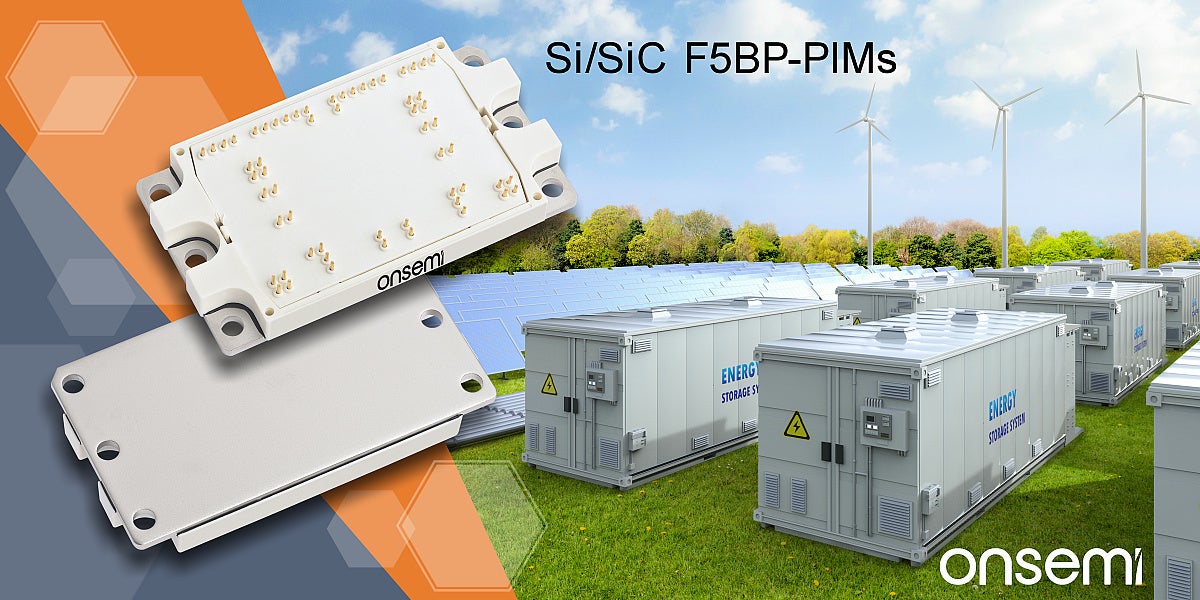Onsemi has released an upgraded series of power modules to boost utility-scale solar generation and storage.
The new line consists of silicon and silicon carbide hybrid power-integrated modules (PIMs) in an F5BP package that can be integrated with solar string inverters or energy storage system (ESS) applications.
“The F5BP-PIMs are integrated with 1050V FS7 IGBT and the 1200V D3 EliteSiC diode to form a foundation that facilitates high voltage and high current power conversion while reducing power dissipation and increasing reliability,” the company said in a statement. “The FS7 IGBTs offer low turn-off losses and reduce switching losses by up to 8%, while the EliteSiC diodes provide superior switching performance and lower voltage flicker by 15% compared to previous generations.”
The PIMs feature an I-type neutral point clamp (INPC) design for the inverter module and a flying capacitor topology for the boost module. They also have an optimized electrical layout and advanced direct-bonded copper (DBC) substrates, reducing stray inductance and thermal resistance for improved performance.
“A copper baseplate further decreases thermal resistance to the heat sink by 9.3%, ensuring the module remains cool under high operational loads,” Onsemi added. “This thermal management is crucial in maintaining the efficiency and longevity of the modules, making them highly effective for demanding applications that require reliable and sustained power delivery.”
The modules operate at temperatures ranging from -40 C to 150 C under switching conditions and can handle up to 125 C in storage. Weighing 245 grams each, the modules feature solder pins, are free of lead (Pb) and halides, and deliver improved power density and efficiency compared to earlier models. This enhancement increases solar inverter system power from 300 kW to 350 kW within the same footprint.
“This means a one-gigawatt (GW) capacity utility-scale solar farm using the latest generation modules can achieve an energy savings of nearly 2 MW per hour or the equivalent of powering more than 700 homes per year,” the company said. “Additionally, fewer modules are required to achieve the same power threshold as the previous generation, which can reduce power device component costs by more than 25%.”
This content is protected by copyright and may not be reused. If you want to cooperate with us and would like to reuse some of our content, please contact: editors@pv-magazine.com.



By submitting this form you agree to pv magazine using your data for the purposes of publishing your comment.
Your personal data will only be disclosed or otherwise transmitted to third parties for the purposes of spam filtering or if this is necessary for technical maintenance of the website. Any other transfer to third parties will not take place unless this is justified on the basis of applicable data protection regulations or if pv magazine is legally obliged to do so.
You may revoke this consent at any time with effect for the future, in which case your personal data will be deleted immediately. Otherwise, your data will be deleted if pv magazine has processed your request or the purpose of data storage is fulfilled.
Further information on data privacy can be found in our Data Protection Policy.